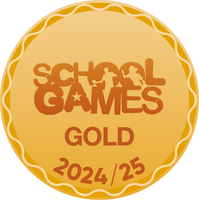Writing at Anston Brook
Intent
At Anston Brook Primary School we intend to give our learners the knowledge, skills and authentic experience to better understand the world around us, the opportunities it may provide, and the aspiration to contribute to and change the world around them.
The National Curriculum states that a high-quality education in English will teach pupils to speak and write fluently so that they can communicate their ideas and emotions to others, and through their reading and listening, others can communicate with them.
The aim is to ensure that all pupils:
- acquire a wide vocabulary, an understanding of grammar and knowledge of linguistic conventions for reading, writing and spoken language.
- appreciate our rich and varied literary heritage.
- write clearly, accurately and coherently, adapting their language and style in and for a range of contexts, purposes and audiences.
- use discussion in order to learn; they should be able to elaborate and explain clearly their understanding and ideas.
- are competent in the arts of speaking and listening, making formal presentations, demonstrating to others and participating in debate.
Implementation of Writing
Our writing curriculum road map shows all learners in school what they have already learned, what they will learn next and in the future. It supports the teaching and learning of writing composition and the aspects of vocabulary, grammar and punctuation throughout all age groups. Our writing curriculum ensures children learn the skills and knowledge progressively to become fluent, confident and purposeful writers that can engage the reader with rich language and technical vocabulary.

Links to the other areas of the English curriculum:
Early Writing
-
Daily activities to develop gross motor and fine motor skills.
-
Daily activities to strengthen wrists, hands and fingers e.g. dough disco, threading beads.
-
Opportunities to make marks in the continuous provision both indoors and outdoors.
-
Daily handwriting sessions for FS2 children.
-
Opportunities to write in daily phonics lessons to apply the skill of segmenting to spell.
-
Writing is for a purpose with a clear audience.
-
Writing from first hand experiences e.g. writing instructions to make gingerbread men.
-
Writing tasks set to complete in continuous provision e.g. write a shopping list, write labels for the small world animals.
-
Formal guided writing sessions for FS2 children.
-
Talk for Writing strategies are used to help children retell familiar stories - orally and written.
KS1 & KS2 Writing
-
The stimulating school environment places literacy as it's heart.
-
Writing is meaningful and has a clear purpose and audience.
-
Quality texts are used to inspire our writers.
-
Children develop their thoughts, ideas, feelings and opinions through 'ready to write' experiences such as drama, role-play, hot seating, debate, discussion, building word banks, visual stimuli (pictures, film) and Talk4Writing strategies.
-
Children makes plans before writing - 's' plan or a story map.
-
Shared writing opportunities - adults model and scaffold writing structure and content through interactive and engaging activities.
-
Guided writing to support all levels of children.
-
Paired/collaborative writing
-
Independent writing - children plan, draft, write, edit and assess their work
-
Children have the opportunity to present their writing.
How do we support our children as writers?









